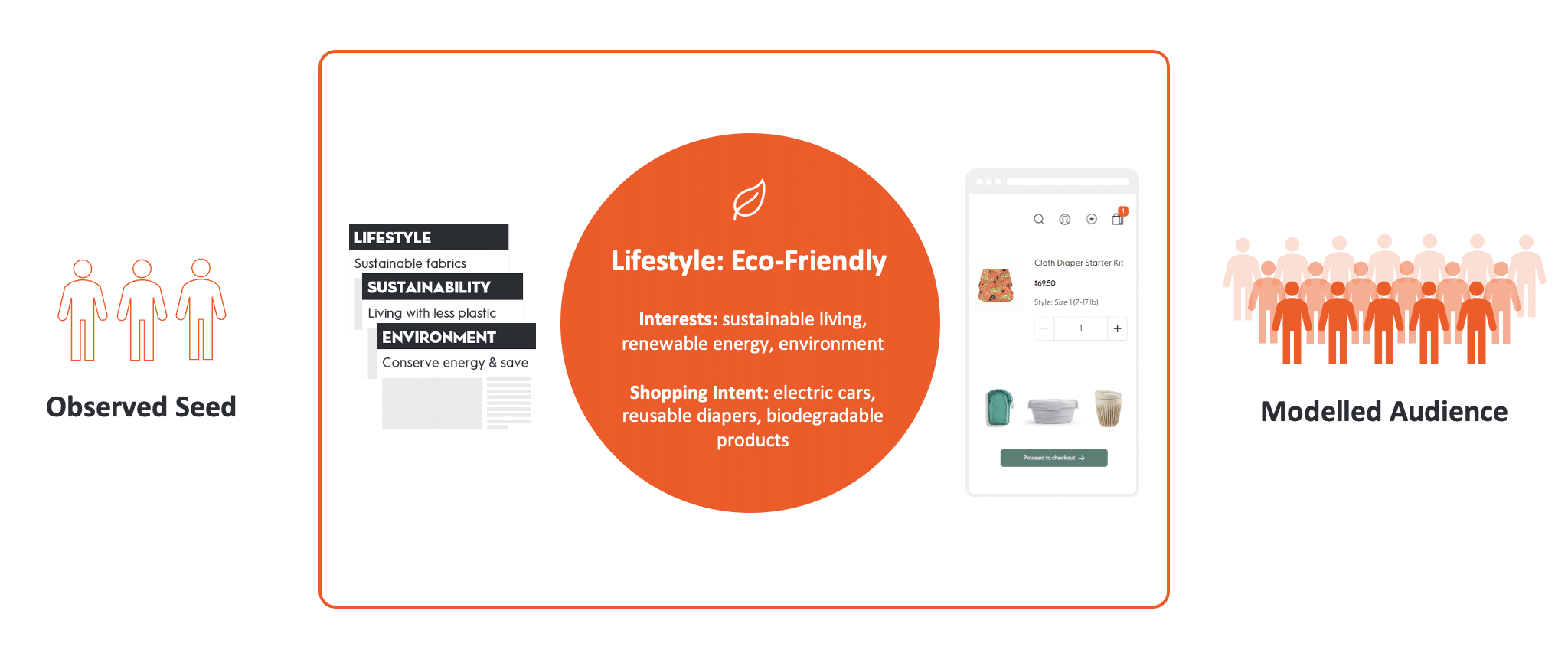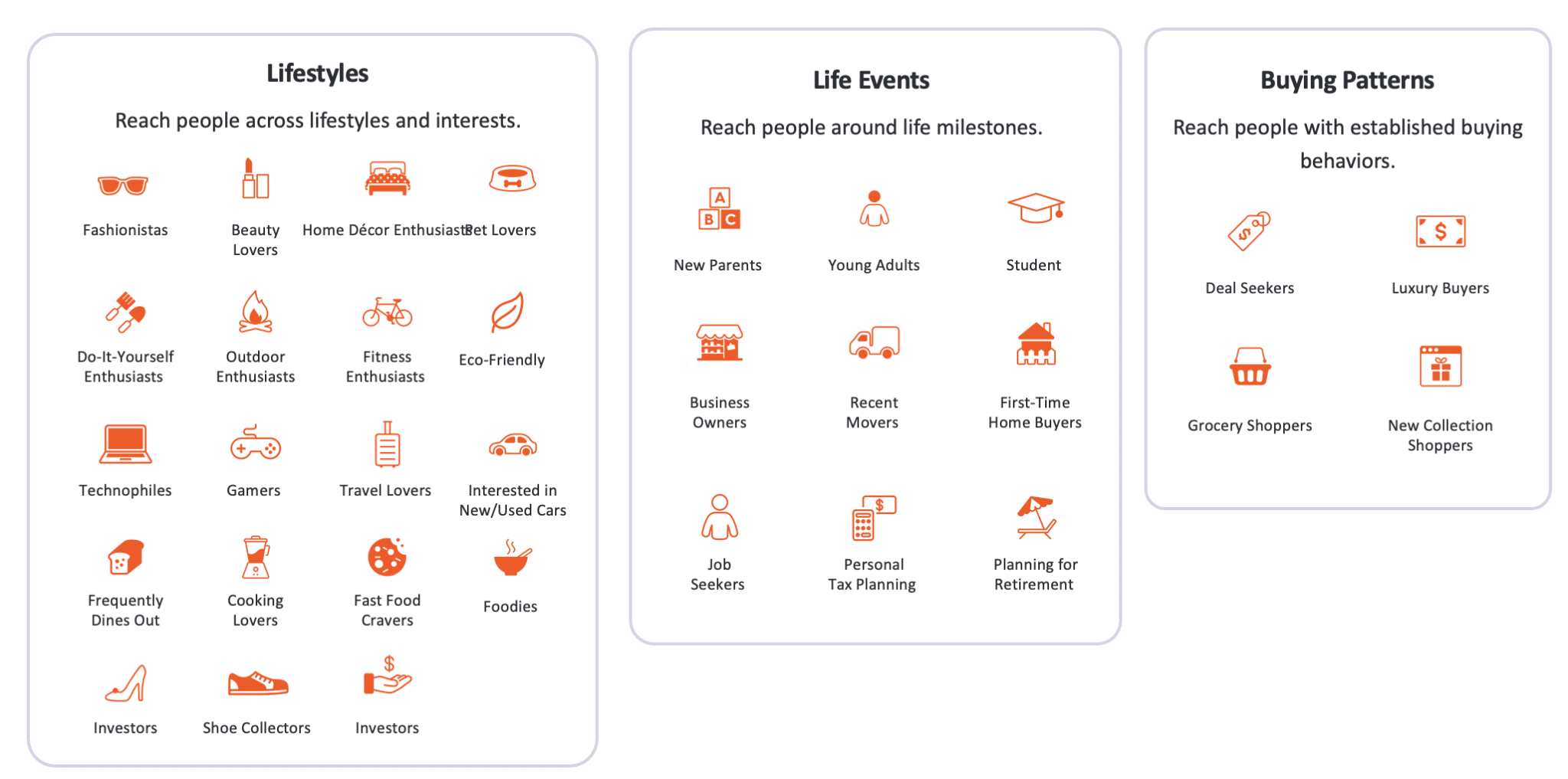Behavioral Targeting
Reaching the right people at the right time is everything in digital advertising. Behavioral targeting takes this idea and turns it into a science, analyzing online actions to deliver ads so tailored, they feel like they were made just for you. But how does it work, and why does it matter? Let’s unpack why behavioral audiences are such a game-changer for advertisers, and how you can use it to supercharge your marketing.
What is behavioral targeting?
Behavioral targeting is a digital advertising strategy that analyzes users’ online activities, such as browsing history, purchase patterns, and content engagement, to deliver personalized ads tailored to their interests. For instance, if someone frequently visits eco-friendly product pages, they might see ads for sustainable clothing or reusable kitchen items. By focusing on user behavior rather than general demographics, it ensures ads relevancy, improving engagement and effectiveness, and helping brands to:
- Deliver hyper-personalized ads.
- Improve campaign performance by focusing on high-intent users.
- Build stronger connections with potential customers through relevance.
Whether you’re running display ads, video ads, or programmatic campaigns, behavioral targeted ads ensure your message reaches the right people at the right time.
How behavioral targeting works
At its core, behavioral targeting boils down to three key steps:
1. Data collection. This starts with capturing user activity, like:
- Browsing habits: Websites visited, categories explored, and time spent on specific pages.
- Purchase intent: Items added to shopping carts or wish lists.
- Content engagement: Types of articles, videos, or social media posts interacted with.
Tools like cookies, pixels, and first-party data make this possible.
2. Audience segmentation. Once the data’s in, users are grouped into segments based on shared behaviors. Think eco-conscious consumers, deal hunters, or new parents. These segments help advertisers speak directly to people’s interests, making campaigns more impactful.
- Lifestyles: Eco-conscious consumers, tech enthusiasts, or foodies.
- Life Events: Recent movers, new parents, or college students.
- Buying Patterns: Frequent shoppers, deal seekers, or luxury buyers.
3. AI-driven targeting. Advanced algorithms take it from there, identifying users with the strongest intent and finding others who share similar traits. This “lookalike modeling” is like multiplying your best customer list—without the heavy lifting.

Why behavioral targeting works
When ads are personal, they connect. Behavioral targeting makes this happen, and here’s how:
- Expand your audience. Allowing you to move beyond your existing customer base by identifying new audiences with similar interests or purchase intent. This approach ensures you’re consistently reaching potential customers who are likely to engage with your brand.
- Reach based on lifestyle, not just clicks. One of the unique strengths of behavioral targeting is its ability to reach users based on broader lifestyle patterns, not just recent online activity. For instance, an outdoor gear brand can target adventure enthusiasts, even if they haven’t recently searched for hiking equipment.
- Level up seasonal campaigns. Seasonal events like Black Friday, Mother’s Day, or back-to-school shopping create unique opportunities for brands, enabling advertisers to capitalize on these moments by reaching shoppers who historically engage during these periods.
- Enhance ad relevance. By focusing on behaviors instead of demographics alone, advertisers can deliver ads that truly resonate. A student who browses fitness content, for example, will see ads for affordable workout gear, not unrelated offers.
Real-world examples of behavioral targeting in action
Here’s how brands use behavioral targeting to make their campaigns shine:
- Lifestyles: Serve ads that match passions:
- Fashionistas: Serve ads for new clothing collections or exclusive sales.
- Eco-friendly consumers: Promote sustainable product lines or green initiatives.
- Food lovers: Highlight recipes, meal kits, or gourmet products.
- Life events: Major life milestones often trigger specific buying decisions:
- New Parents: Target diaper brands, baby furniture, or educational toys.
- Recent Movers: Promote home decor, cleaning services, or utility providers.
- Graduates: Highlight job boards, professional attire, or moving services.
- Buying habits: Tailor offers to frequent shoppers, deal seekers, or luxury buyers.
- Luxury Buyers: Showcase premium or limited-edition products.
- Deal Seekers: Highlight discounts, flash sales, or loyalty programs.
- Grocery Shoppers: Promote weekly specials or subscription services.
- Seasonal Campaigns: identify users who shop during key seasons, ensuring ads align with their interests:
- Holiday Shoppers: Deliver gift guides and festive promotions.
- Back-to-School Parents: Focus on school supplies and clothing.
- Summer Travelers: Highlight vacation packages or travel gear.

Behavioral targeting vs. behavioral retargeting
While they’re cut from the same cloth, these two strategies are designed to achieve distinct goals.
- Behavioral targeting. This helps you uncover new audiences based on their interests and intent. It’s ideal for expanding your reach and connecting with potential customers who are likely to engage.
- Behavioral retargeting. This focuses on re-engaging people who’ve already interacted with your brand—like someone who browsed your site or left items in their cart. It’s perfect for driving conversions and nudging shoppers closer to a purchase.
Both approaches are powerful, but they shine at different points in the customer journey, making them complementary tools in a well-rounded advertising strategy.
Why behavioral targeting works better with Criteo
At Criteo, we’ve taken behavioral advertising to new heights with our Behavioral Audiences solution. It combines AI and data to help advertisers:
- Target smarter. Reach users based on lifestyles, life events, and buying patterns.
- Expand efficiently. Use AI to uncover lookalike audiences and broaden your reach.
- Maximize key moments. Pinpoint shoppers during peak times, like holidays or seasonal sales.
By harnessing behavioral targeting with Criteo, you can turn data into meaningful connections—keeping your brand top of mind when it matters most.
Ready to transform your strategy? Explore Criteo’s Behavioral Audiences and start connecting with your next customers today.










